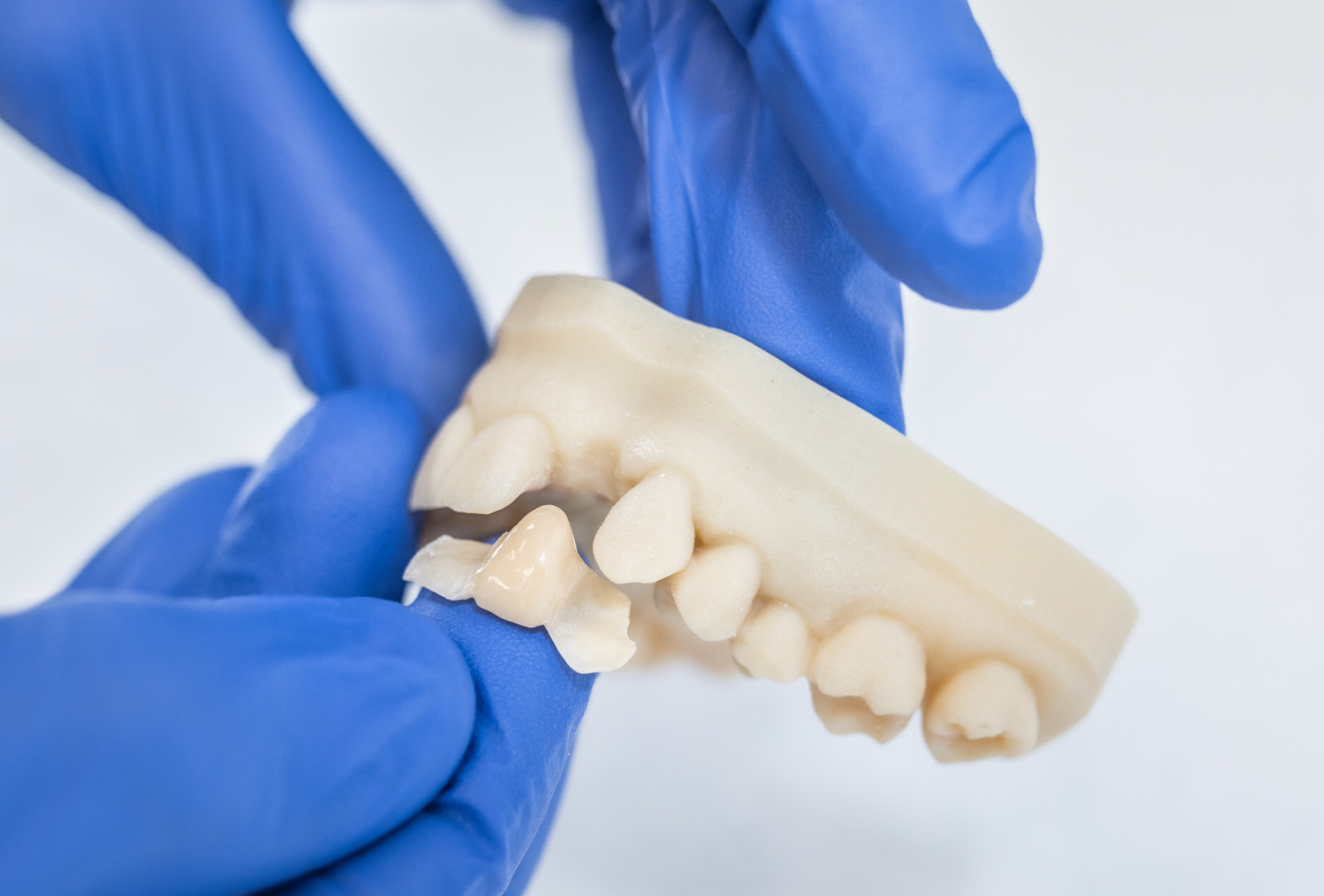What is a dental bridge?
Missing teeth can be a real embarrassment factor for many people, as well as causing difficulty with functional things, like eating and speech.
Using surrounding natural teeth for support, we can create a replacement which literally bridges the gap, restoring the beauty of your smile.
A standard dental bridge – the most common form of bridge consists of a false tooth held in place by two crowns, cemented onto each natural adjacent tooth.
A cantilever dental bridge – similar to a standard bridge, the key difference in this situation is that the false tooth is secured to a single natural tooth.
A ‘Maryland’ dental bridge – like a standard, this version can only be used if you have natural teeth either side of a gap. Instead of using crowns to hold a false tooth in place, a Maryland bridge relies on a metal or porcelain framework, bonded to the back of the natural teeth.
An implant-supported dental bridge – helping you to span larger gaps, false teeth embedded into your jawbone could be used to support a bridge. This is an invasive, costly, and time-consuming treatment option, which is likely to take several months and specialist support to complete.
What are dental bridges made from?
A false tooth, known in the business as a pontic, can be made from several materials including gold, porcelain, or durable resin. Most people opt for a tooth-coloured material, helping the bridge to blend more seamlessly with their natural teeth.
How long will a dental bridge last?
You could enjoy many years without any problems, but it really depends on a few factors. Dental bridges are reliant on the strength of the adjacent teeth, so any problems with those could cause your bridge to fail. It’s important to maintain good dental hygiene to avoid future issues.
Teeth located in certain areas within your mouth may be subject to more wear than others, which could cause a dental bridge to wear sooner than it would in another area. Also, accidental trauma could cause a bridge to loosen or fall out.
You might want to replace a crown sooner if it stains over time, making it more obvious alongside your natural teeth. Obviously, a false tooth isn’t the same material as a natural tooth, so it won’t respond to treatment like tooth whitening in the same way.
For the most part though, a dental bridge is a robust solution in many situations.
Speak to us about your options
- Book an appointment with us so we can complete an assessment, discuss your options, and explore the possibility of fitting a dental bridge. We may need to take x-rays as part of this process to make sure your other teeth are strong enough.
- If you decide it’s the right option, we’ll take a mould or scan of your teeth. Our lab will use this to create a false tooth which fits neatly alongside your natural teeth.
- When your bridge is ready, we’ll invite you back to fit your new tooth in place. Then you should be all set to smile with pride.
How much does a dental bridge cost?
Several factors can affect the cost of a dental bridge, but the figures below should give you a rough idea. Of course, we’ll quote a price before any treatment begins:
Resin retained bridge
Private patients from: £695
With Denplan Essentials from: £625.50
With Denplan Care: just pay the lab costs
Fixed bridge
Private patients from: £695 per tooth
With Denplan Essentials from: £625.50 per tooth
With Denplan Care: just pay the lab costs
Re-cementing
Private patients from: £69.50
With Denplan Essentials from: £62.55
With Denplan Care: covered
Book for a more complete smile
Now you’ve had a chance to read about the treatments we can offer at White Gables Dental Practice, why not get in touch?
